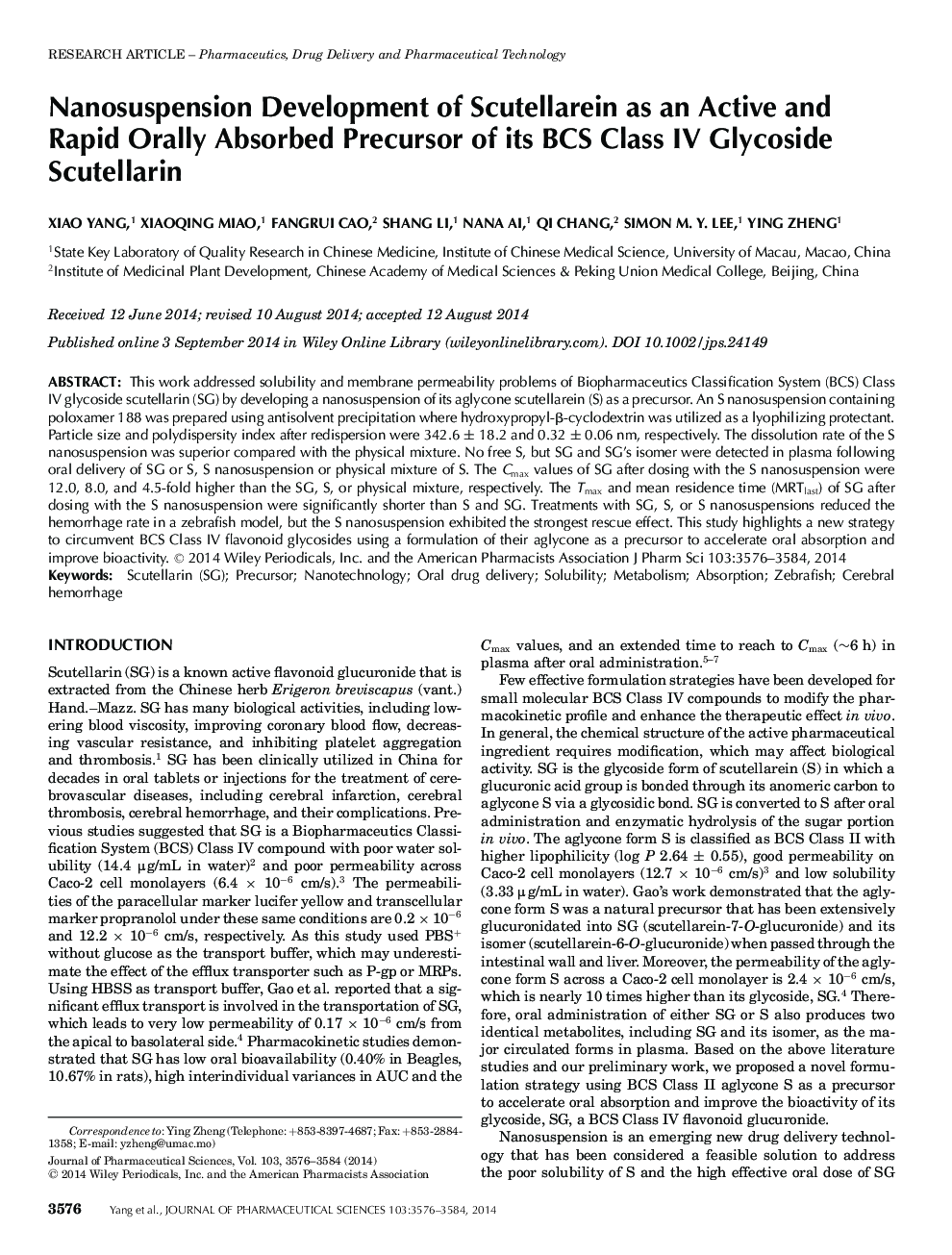| Article ID | Journal | Published Year | Pages | File Type |
|---|---|---|---|---|
| 10162264 | Journal of Pharmaceutical Sciences | 2014 | 9 Pages |
Abstract
This work addressed solubility and membrane permeability problems of Biopharmaceutics Classification System (BCS) Class IV glycoside scutellarin (SG) by developing a nanosuspension of its aglycone scutellarein (S) as a precursor. An S nanosuspension containing poloxamer 188 was prepared using antisolvent precipitation where hydroxypropyl-β-cyclodextrin was utilized as a lyophilizing protectant. Particle size and polydispersity index after redispersion were 342.6 ± 18.2 and 0.32 ± 0.06 nm, respectively. The dissolution rate of the S nanosuspension was superior compared with the physical mixture. No free S, but SG and SG's isomer were detected in plasma following oral delivery of SG or S, S nanosuspension or physical mixture of S. The Cmax values of SG after dosing with the S nanosuspension were 12.0, 8.0, and 4.5-fold higher than the SG, S, or physical mixture, respectively. The Tmax and mean residence time (MRTlast) of SG after dosing with the S nanosuspension were significantly shorter than S and SG. Treatments with SG, S, or S nanosuspensions reduced the hemorrhage rate in a zebrafish model, but the S nanosuspension exhibited the strongest rescue effect. This study highlights a new strategy to circumvent BCS Class IV flavonoid glycosides using a formulation of their aglycone as a precursor to accelerate oral absorption and improve bioactivity. © 2014 Wiley Periodicals, Inc. and the American Pharmacists Association J Pharm Sci 103:3576-3584, 2014
Keywords
Related Topics
Health Sciences
Pharmacology, Toxicology and Pharmaceutical Science
Drug Discovery
Authors
Xiao Yang, Xiaoqing Miao, Fangrui Cao, Shang Li, Nana Ai, Qi Chang, Simon M.Y. Lee, Ying Zheng,
